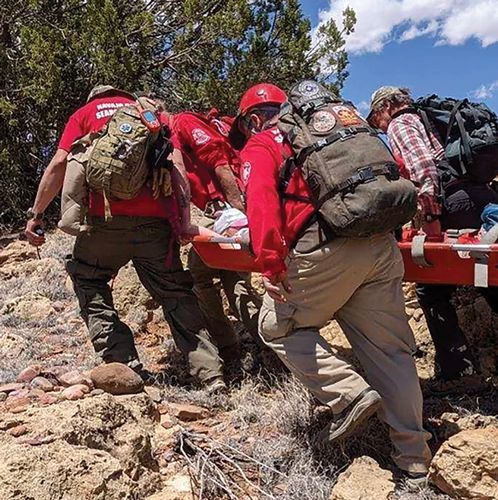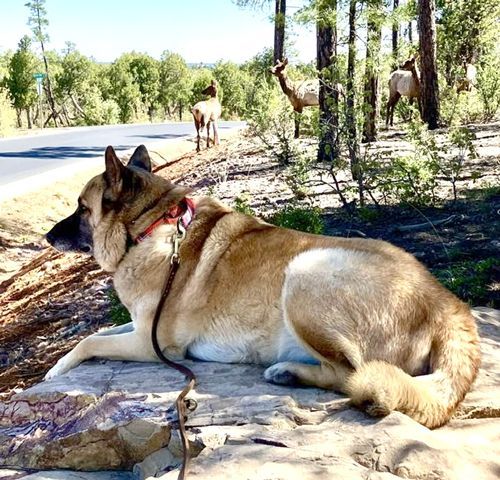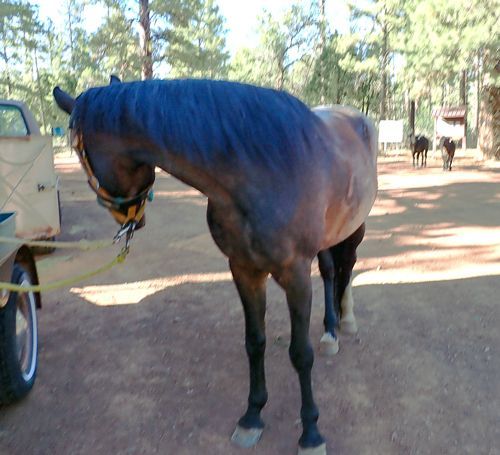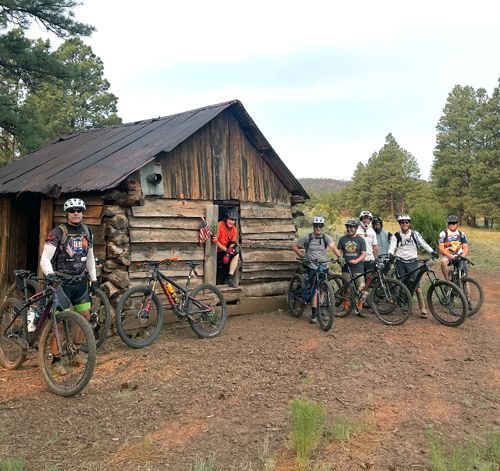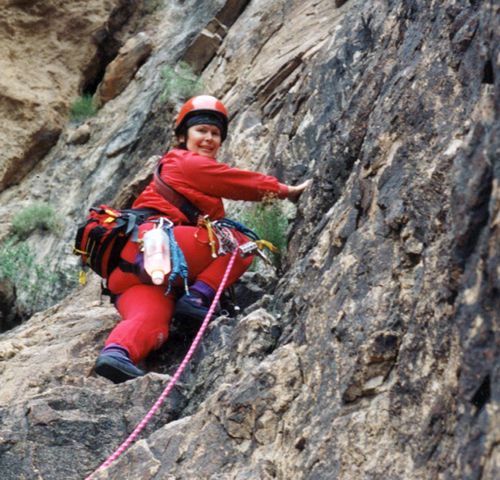A growing interest in airguns
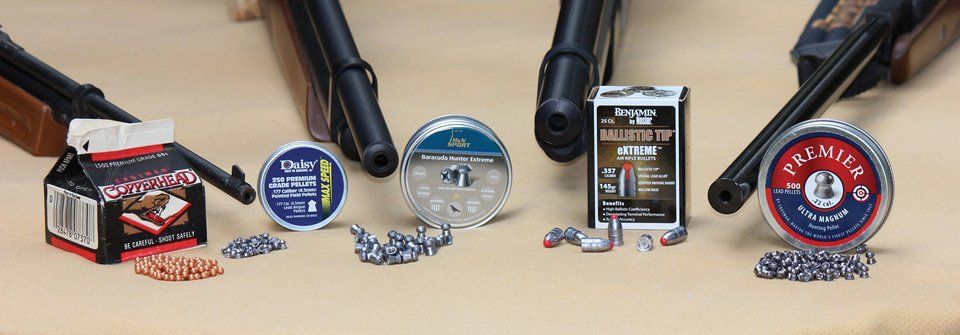
By Tony Martins
For generations, boys and girls have learned valuable lessons from the BB gun. Those who didn’t have one wanted one. Despite the famous Hollywood narrative “... you’ll shoot your eye out” in the classic 1983 movie A Christmas Story, millions of kids continue to learn personal responsibility, safety, and fundamental shooting skills – and have lots of fun doing so – courtesy of airguns like the Daisy Red Ryder.
But airguns are not just for kids anymore. Did you know that you can hunt big game in Arizona with airguns? Hunting small game like squirrels, rabbits, and birds has been commonplace for years yet, many hunters are unaware that big game can also be hunted with modern air rifles that are powerful enough and accurate enough to do so. Back in January 2013, Arizona’s Game & Fish Commissioners decided to expand hunting opportunities for airgunners by including big game animals, with a unanimous vote.
Interest in hunting with airguns is growing. In fact, this is one of the few segments of the hunting industry that is growing, and for good reasons. Airguns are safer and quieter than firearms, they are less expensive to shoot, ammo is readily available, and they can be used in many places where firearms cannot be used. Top-grade precision airguns are now considered to be the most accurate guns in the world... no kidding! High-quality “adult” air rifles are available in calibers from .177 to .50 (and larger in custom guns) and with enough power to cleanly and humanely take all but the largest animals on Earth. Game agencies have taken notice and most states have updated laws and regulations in the past few years to allow a wide variety of species to be hunted with airguns, including big game.
Two elements are essential for success when hunting with an airgun – accurate shot placement and enough kinetic energy delivered by the projectile (typically a pellet or slug) to cleanly dispatch animals of the size hunted. A perfectly placed shot will almost always get the job done, even if it is a little underpowered. Conversely, a poorly placed shot with an airgun can result in a wounded and lost animal, even when more than enough energy is delivered by the shot. Why? Because projectiles launched with compressed air generate substantially less terminal kinetic energy than projectiles launched with gunpowder.
Consider the lowly prairie dog for example. This tough little animal is a plague to ranchers and horsemen in many parts of the west. Thousands of these pests are killed every year by varmint hunters using high-powered centerfire rifles like the .22-250 Remington. A 50-grain bullet fired from one of these rifles at 3800 feet-per-second generates over 1600 foot-pounds of energy. This is about 200-times more energy than is actually necessary to kill a prairie dog! Thus, the “kill zone” with this rifle – anywhere on the torso – is about 20 square inches in size due to the tremendous energy delivered, which causes hydrostatic shock and of course, blood loss. By comparison, a Benjamin Armada .22 caliber pre-charged pneumatic (PCP) air rifle generates only 32 foot pounds of energy or about 4-times more than necessary to cleanly dispatch one of these varmints. Nevertheless, to kill this tough little animal cleanly with this powerful airgun requires a precise shot to the brain, a “kill zone” that is no larger in size than an M&M candy! If shot in the body and not anchored immediately, many small animals will crawl down a burrow or into thick brush, or some secure location in a tree where they cannot be recovered by the hunter. This illustrates the importance of accuracy when hunting with airguns to avoid unnecessary wounding loss.
Not all airguns are accurate enough, or powerful enough to be used for hunting. In terms of accuracy, the airgun – and the airgun hunter – should be capable of shooting groups of 1-inch or less at the distance that shots at the chosen game will be taken. In terms of power, the airgun should generate minimum kinetic energy of 10 foot pounds to be considered a legitimate hunting weapon. This minimum requirement is adequate for taking animals like rodents, most birds, and small game like squirrels and cottontail rabbits. Larger game requires more energy. The energy delivered is a function of the weight of the pellet/slug and its velocity at impact. Generally, the heavier the projectile the lower the velocity, but the energy generated by a heavy slow-moving slug will be substantially greater than the energy from a light pellet moving at high velocity.
Airguns can be categorized into four main categories, according to power source. (1) Pneumatic airguns – also called “pump-ups” – require air to be manually compressed to provide the power, with an onboard pump that is typically operated with a forend lever. These can be single, or multi-stroke, and they are small caliber (.17 to .25). CO2 airguns (2) operate on compressed carbon dioxide gas, contained in a disposable cylinder or supplied from a bulk source. Like pneumatic airguns, these are typically inexpensive and low velocity, designed for target shooting. (3) Spring-Piston and Gas-Piston airguns are probably the easiest to operate and must be cocked to compress the piston prior to firing. This is accomplished either by lever – which can be attached under, atop, or on the side of the gun – or by “breaking” the barrel at the breech so the barrel becomes the cocking lever. The greater the effort required to cock these airguns, the greater the velocity. (4) Pre-Charged Pneumatic (PCP) airguns have an onboard, high-pressure (2000-4500 lbs.) air chamber that is typically charged from an external source, like a compressor, scuba, or another air tank, or high-pressure hand pump. These are powerful weapons suitable for hunting, particularly in the large “big-bore” calibers (.357 to .70).
Big-bore airguns are the natural progression for airgunners who want to hunt big game. They require a larger volume of air than small-bores to power their larger, heavier bullets. Most have some type of air regulating device to provide consistent velocity from one shot to the next, so that point-of-impact and accuracy are maintained. Now you may be thinking that a more powerful airgun is a longer-range airgun, right-? Wrong! These are still limited-range hunting weapons, much like a conventional bow or crossbow. The practical range for humanely killing big game like deer, black bear, and hogs with the most powerful big-bore air rifles is just 80-120 yards. The heavy bullets (250 to 500-grains) and moderate velocities (700-850 feet-per-second) of these airguns make it difficult to determine the precise point-of-impact past 100 yards, where the bullet is plummeting toward earth, and quickly losing energy. Remember, hunting with an airgun – any airgun – is all about precise shot placement.
I often hear the argument that airguns cannot take big game humanely and therefore, ethically. This is simply not true. Ultimately, ethical hunting with an airgun, or any other weapon, is dependent upon the personal ethics of the hunter. Personally, I am intolerant of wounding loss, which is something I do my very best to avoid. I’m certainly not perfect, but I do spend a great deal of time and effort continuously honing my hunting and shooting skills, and doing so is lots of fun! Airgun hunting is not for everyone, however. If you decide to give it a try, here’s a little advice: Understand and accept the limited-range capability of your chosen weapon, do your best to get close to each animal you hunt, aim precisely and shoot accurately. If you do, you too will enjoy success and the satisfaction of hunting with an airgun.
Author Tony Martins is a recognized authority on hunting with airguns. He has been involved with airgun regulatory development with state agencies, as well as field testing and product development for the past 12 years with industry-leading companies like Crosman/Benjamin, and Umarex.

